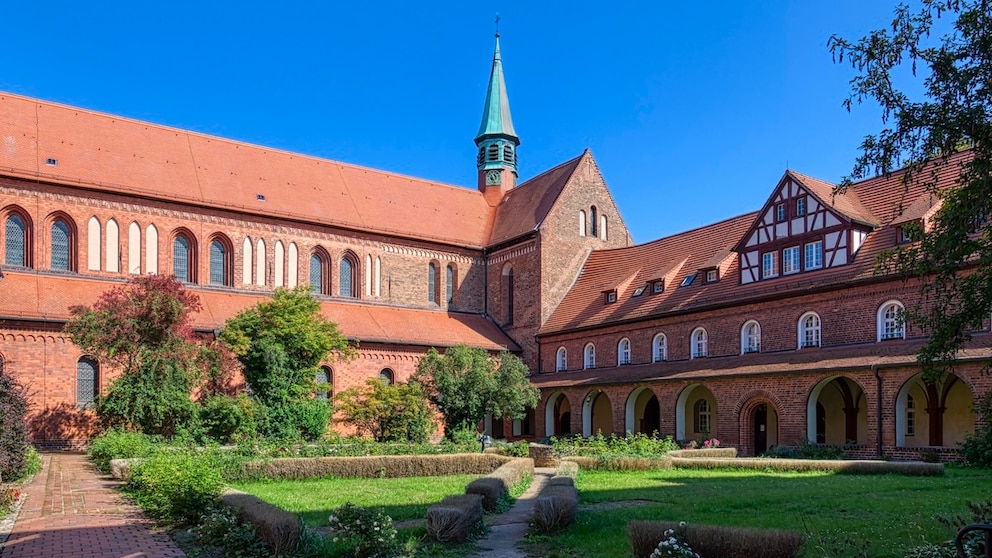January 12, 2025, 5:56 am | Read time: 4 minutes
Kloster Lenin, a monastery, was founded in 1180 by Margrave Otto I and, as the first Cistercian monastery in the Mark of Brandenburg, had a considerable religious and economic influence on the region. All information about the eventful history.
Today, the grounds of Kloster Lehnin are run by the Protestant Deaconess House, which houses a hospital, as well as numerous facilities for youth and elderly care. The building can look back on more than 800 years of history, which can still be seen today in the impressive brick Gothic architecture, which offers an insight into medieval architecture. Find out what else makes Kloster Lehnin so special.
Overview
The Eventful History of Kloster Lehnin
Founded in 1180 by Margrave Otto I, the monastery was one of the first and most important Cistercian monasteries in the Mark of Brandenburg. It consists of the monastery church, the chapter house, the convent house, and other buildings, all of which reflect the clear, simple design of the Cistercians. The three-aisle monastery church is one of the most important brick buildings in the Mark of Brandenburg.
The foundation walls of the apse, transept, and side chapels from the foundation phase at the beginning of the 12th century still exist. However, not much of the interior has been preserved. The high altar and the petrified oak trunk are particularly worth seeing. The monastery once also had a library with over 560 volumes, which was a considerable number for the 15th century. Unfortunately, the books are all lost today.
Even Zehlendorf Once Belonged to the Monks
The Cistercian monks who inhabited the monastery lived according to strict rules that combined prayer, work, and study. They were known for their agriculture and knowledge of water management and pioneered the construction of ponds, which can still be found in the area today. Kloster Lehnin is considered to be the origin of the Christianization and cultural development of the region.
Before the arrival of the Cistercian monks, pagan Slavs lived in the area. Margrave Otto I sent the monks ahead to civilize the area, so to speak. Over time, the monks extended their sphere of influence as far as Werder/Havel and Berlin. In the 14th century, the possessions of Kloster Lehnin included the village of Zehlendorf (today a district of Berlin) and Wandlitz.
Monks Traded and Granted Loans
Due to their brisk trade in honey, grain, meat, fish, leather, and dairy products, the Cistercian monks of Kloster Lehnin soon became a trading power in the region. In the 15th century, the monastery’s income was so good that the monks were even able to grant loans to the towns of Erfurt and Lüneburg. Due to secularization, the Catholic monastery was finally dissolved in 1542. Kloster Lehnin and the 64 villages belonging to it, along with their revenues, then fell to Elector Joachim II.
Over the following centuries, the monastery largely fell into disrepair. Finally, the owner of the manor, Robert von Loebell, ensured its reconstruction with the support of the royal family. King Friedrich Wilhelm IV financed the restoration of the church. In 1911, the Evangelical Church bought the buildings and founded the Luise-Henrietten-Stift deaconess mother house. After the Second World War, the former convent was converted into a hospital.

Location for various movie shoots Kloster Eberbach is Germany’s Hollywood Abbey

Cast your vote! Which of these places is the spookiest in Germany?

More than 2000 years old Berat: The “City of a Thousand Windows” in Albania
Legend of the Origins of Kloster Lehnin
There is also a founding legend about the monastery. According to it, Otto I slept under an oak tree after a hunt. In his dream, a white stag tried to spear him with its antlers. Otto I decided to build a monastery on the site of the oak. A petrified oak block in the altar steps is said to be part of the oak under which Otto had his nightmare. However, more recent research has come to the conclusion that the petrified oak stump is more likely to be a sacred tree at a pagan Slavic place of worship.
With the collaboration of Marianne Rittner


